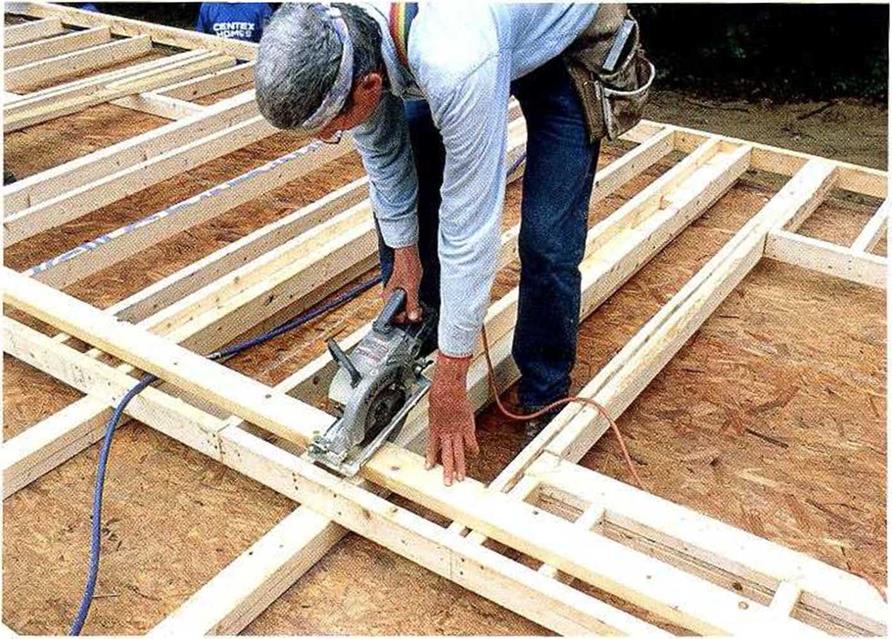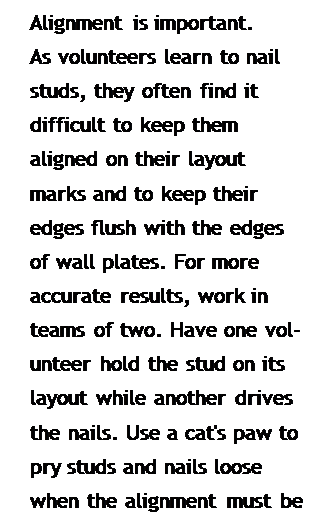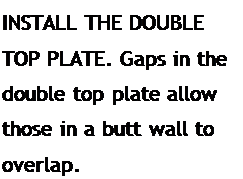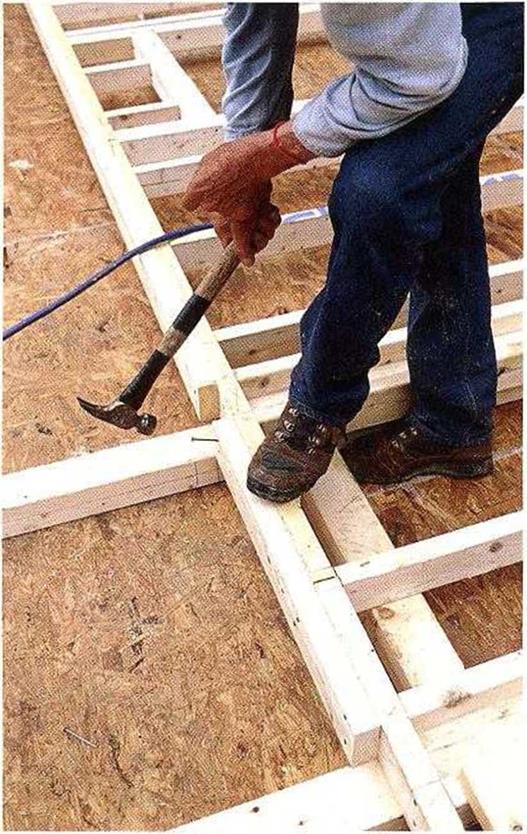Nail on the double top plate
In some parts of the country, carpenters raise the walls before cutting and nailing on the double top plate. In my opinion, the time to nail on the double top plate is now—while the wall is still flat on the floor. Otherwise, vou will have to use a ladder. The top plate is an important structural member. It ties the entire frame together. Without it, severe lateral stress from an earthquake or high winds could easily rip apart a building. If you frame with a single top plate, secure them together with metal plate straps.
On a 2×4 butt wall, the double top plate extends beyond I be top plate a bit less than 3k in. (cut it / in. short—about 3k in.—to make sure it doesn’t protrude beyond the
through wall), so that it can tie into the notch in the double top plate of a through wall.
On through walks, the double top plate has notches where it receives the double top plates extending from butt or intersecting walls.
Now you can see why it was important to mark the plates accurately while locating the corners and channels. You don’t need to measure the length of double top plates. All you need to do is set the double top plate on a through wall above the top plate, with one end held back У/ in. (5k in. on 2×6 walls) from the end, then cut it to length.



 At channel marks, leave 3k-in. cutout so that an intersecting wall can comfortably lap over and tie in at that spot (see the photo on p. 98). When cutting and installing double top plates, leave about a 3k in. gap where the walls tie into each other. This makes it easier for the overlapping double top plates to
At channel marks, leave 3k-in. cutout so that an intersecting wall can comfortably lap over and tie in at that spot (see the photo on p. 98). When cutting and installing double top plates, leave about a 3k in. gap where the walls tie into each other. This makes it easier for the overlapping double top plates to



 slip into place. This is another one of those times when it’s okav to be less than absolutely
slip into place. This is another one of those times when it’s okav to be less than absolutely
4 4
accurate.
When von nail the double top plate to the top plate, it’s important to make sure that there are no gaps in the top plate. The top plate stock must butt tightly together, just as it did when you plated the walls in step 2. Nail the double top plate to the top plate with two 16d nails at each end of the wall and at each break in either the top plate or the double top plate. Elsewhere, nail one 16d nail over each stud. It is best not to nail between studs, because electricians and plumbers run w res and pipes through holes drilled in those locations. Hitting a nail while drilling can dull the bit and give your arm a nasty twist.






Leave a reply